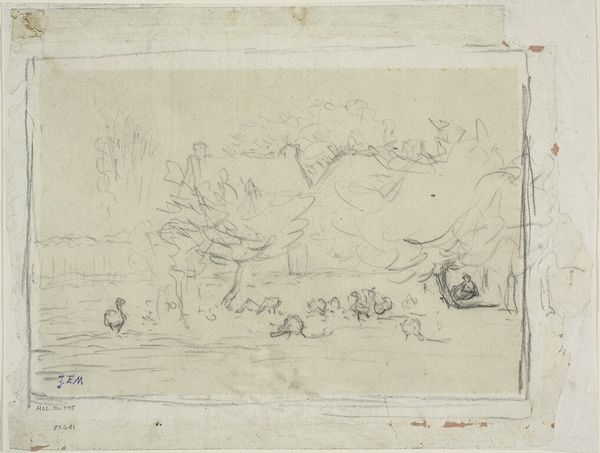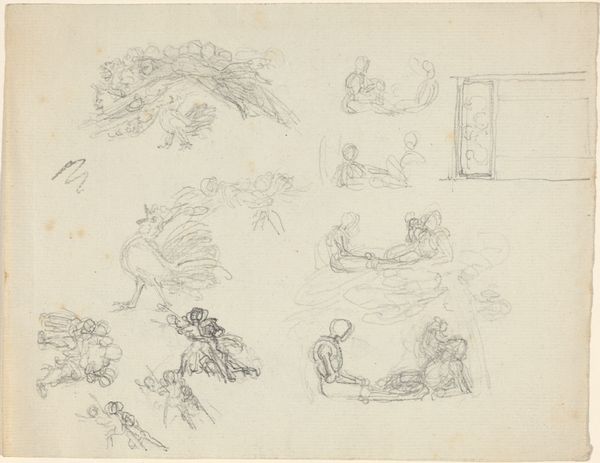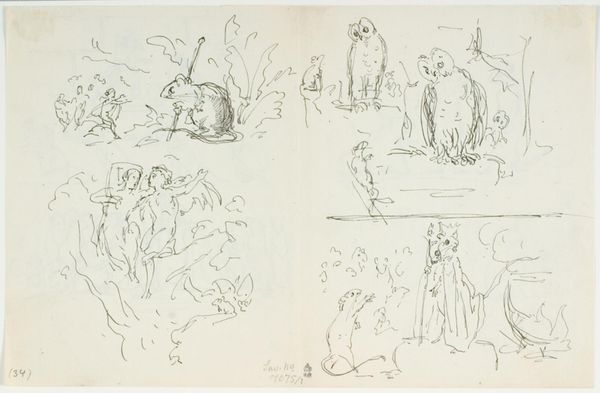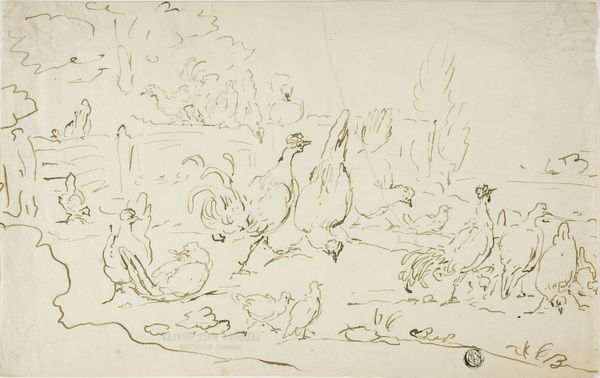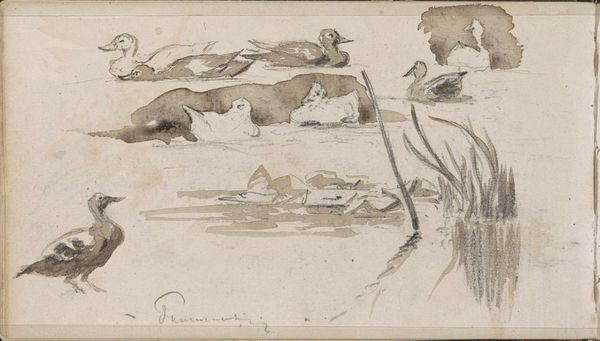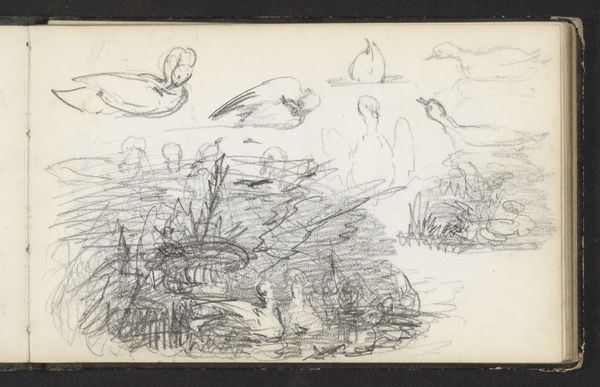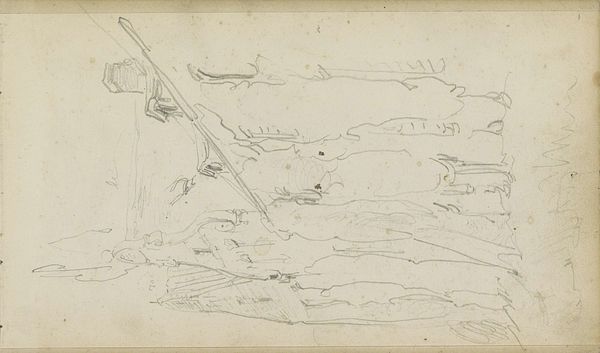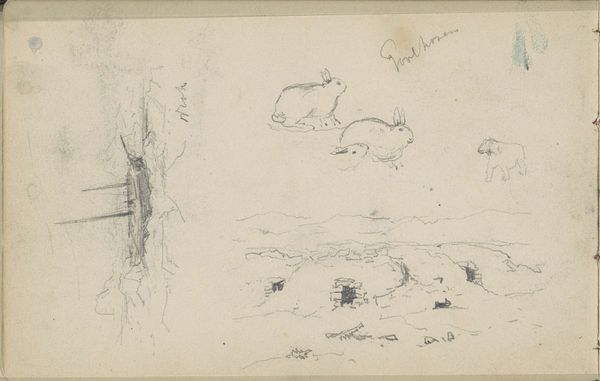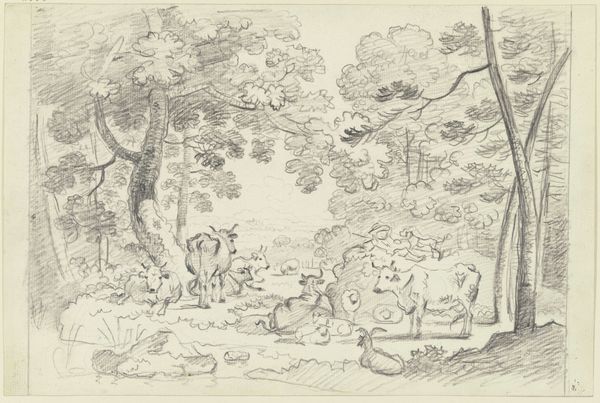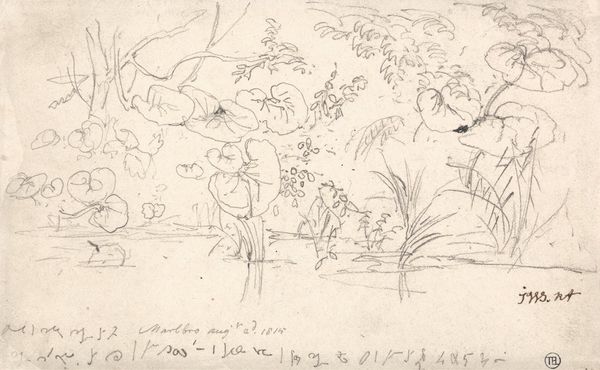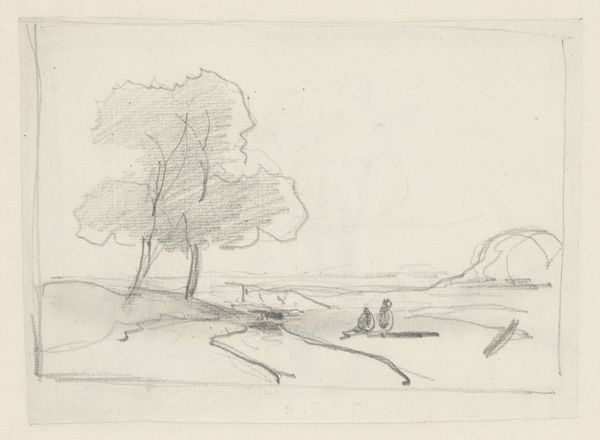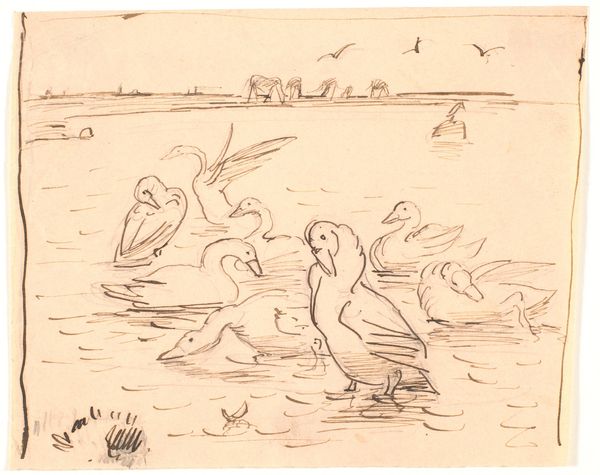
drawing, pencil
#
drawing
#
landscape
#
figuration
#
folk-art
#
pencil
#
realism
Dimensions: height 135 mm, width 210 mm
Copyright: Rijks Museum: Open Domain
Editor: We are looking at “Rivierlandschap en gevogelte,” or "Riverside Landscape and Poultry," a pencil drawing created sometime between 1821 and 1891 by Guillaume Anne van der Brugghen. It’s a fairly simple composition with birds sketched in the foreground and a landscape in the background, yet there’s something charming about its sketch-like quality. What do you see in this piece? Curator: Focusing on the formal aspects, the most striking element is the artist's use of line. Observe how the varying thickness and density of the pencil strokes define form and texture. The landscape is rendered with delicate, almost ethereal lines, creating a sense of distance and atmospheric perspective, wouldn't you agree? Editor: Yes, the landscape does recede. So, what does that juxtaposition of delicate and bold lines accomplish here? Curator: The contrast creates a visual hierarchy, drawing the viewer's attention to the poultry. The artist is not so interested in accurately representing their anatomies or natural settings but rather emphasizes form. Van der Brugghen highlights essential features and movement of the fowl, the interplay of light and shadow further enhances this effect. Notice how that bold rooster establishes the focal point. Editor: I see, so it's less about realistic representation and more about the artist's expressive use of line and form within the drawing itself. It's the stark contrast between foreground and background that animates it, too. I appreciate how closely you’ve shown me to examine the work! Curator: Indeed! Close looking reveals the expressive potential of something as seemingly simple as a pencil sketch. There’s such eloquence to the composition that, devoid of contextualizing symbolism, the viewer can project one’s own interpretation.
Comments
No comments
Be the first to comment and join the conversation on the ultimate creative platform.
